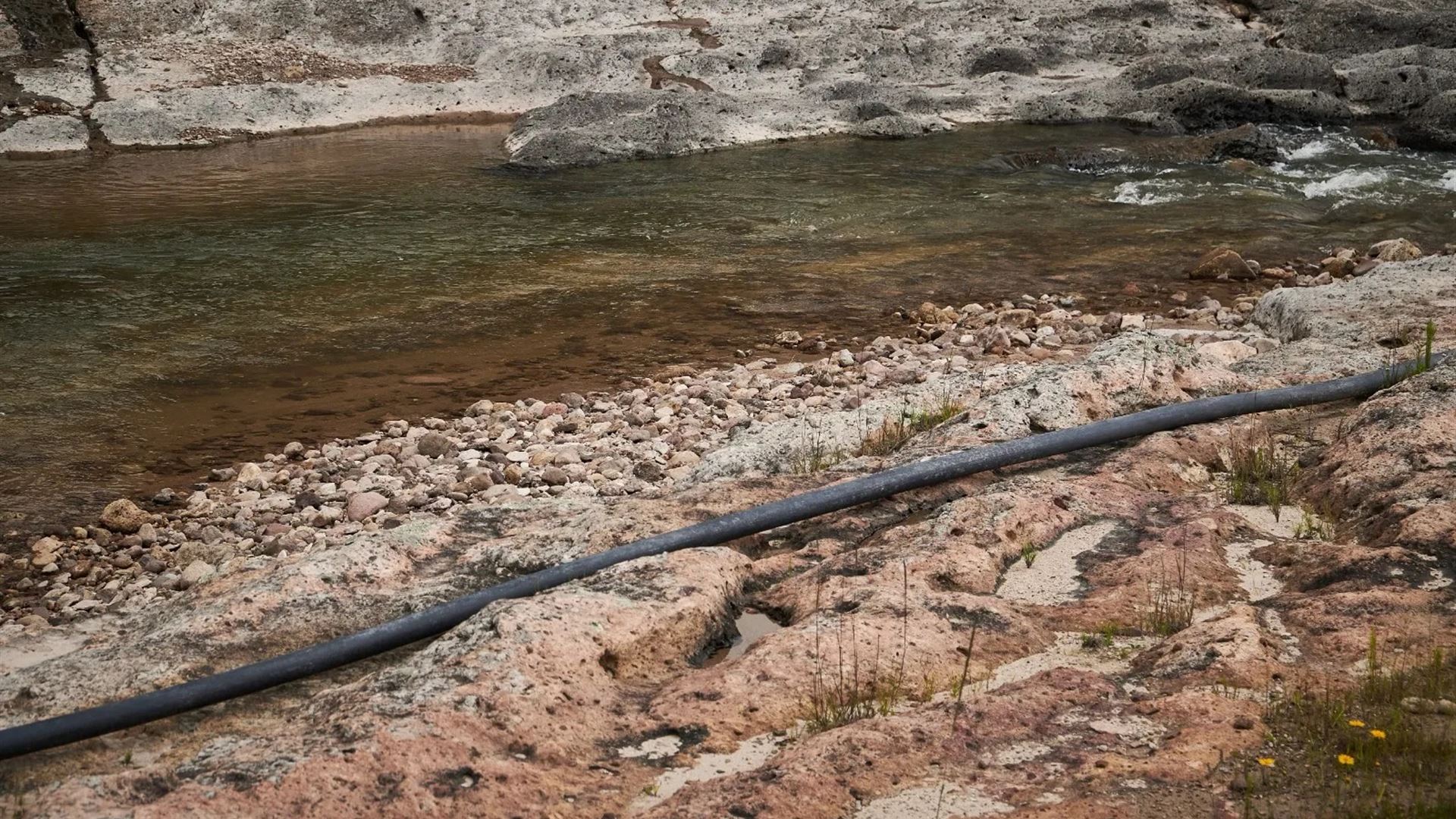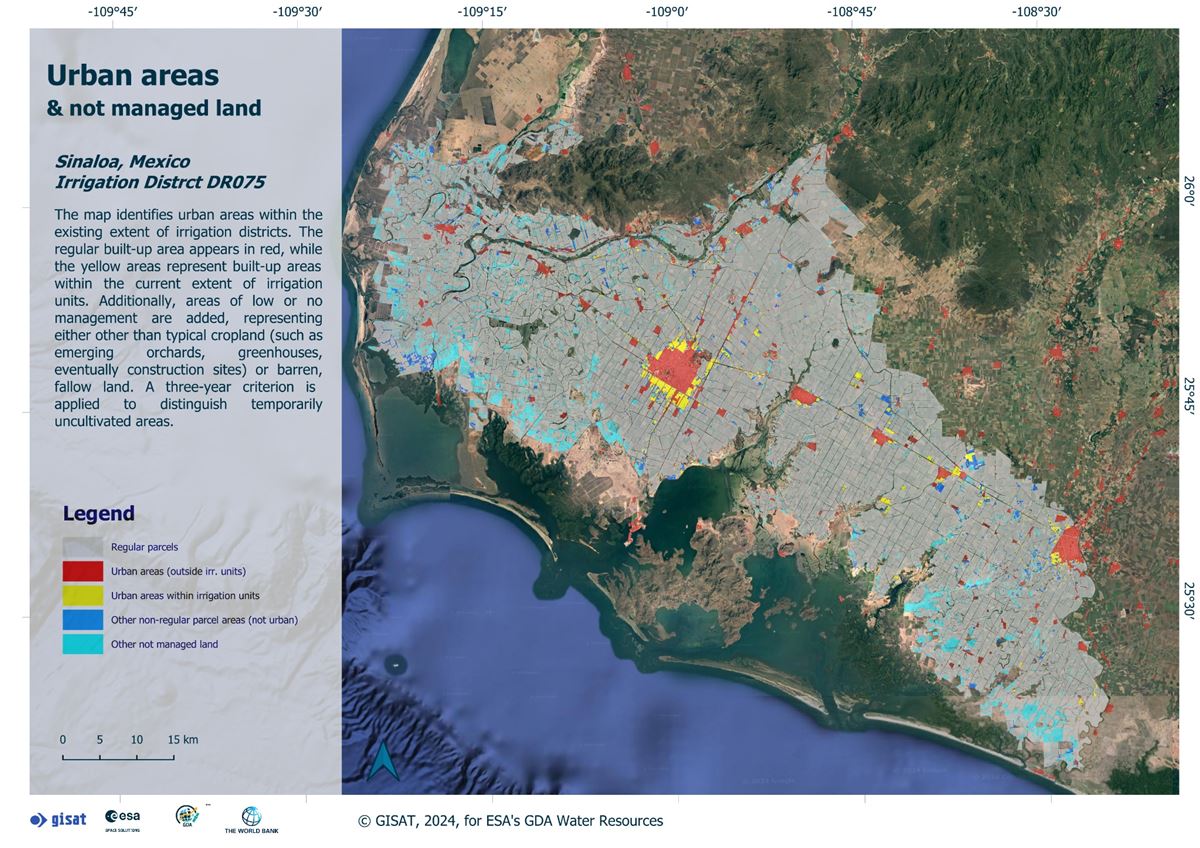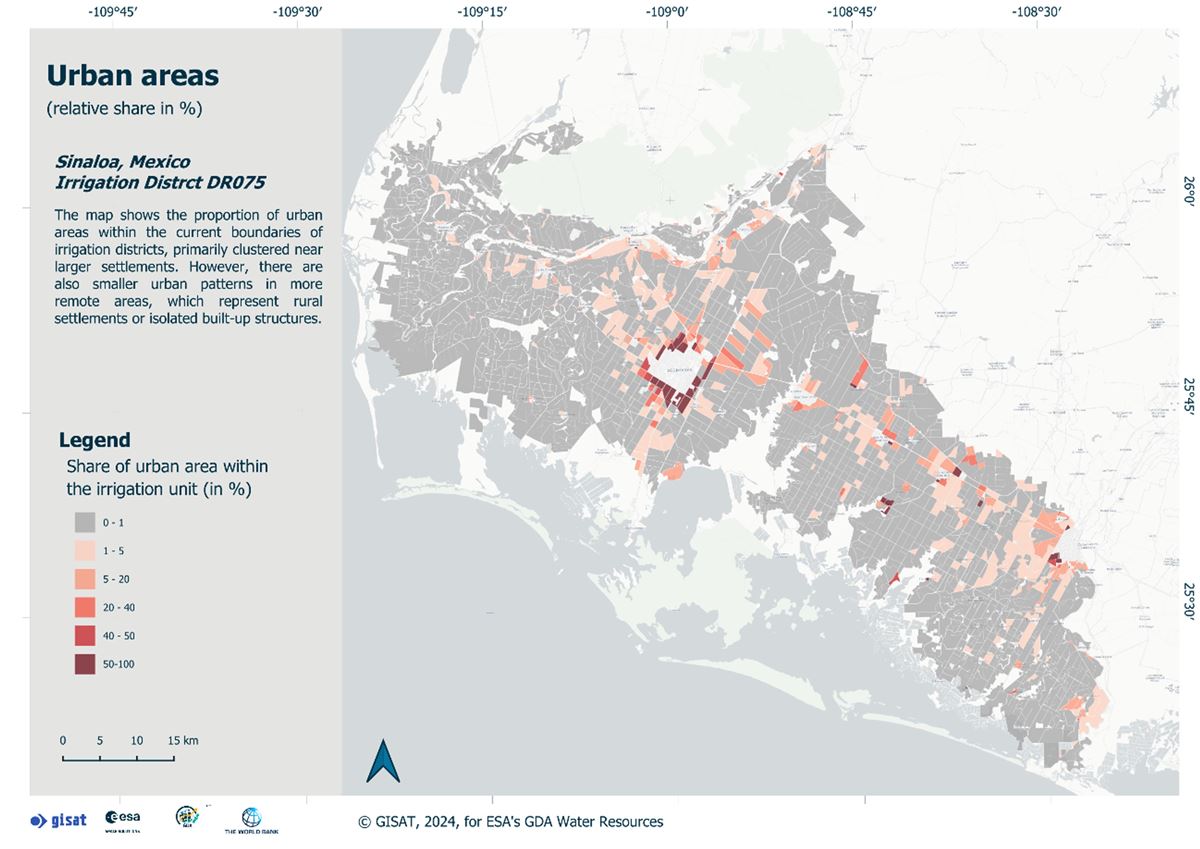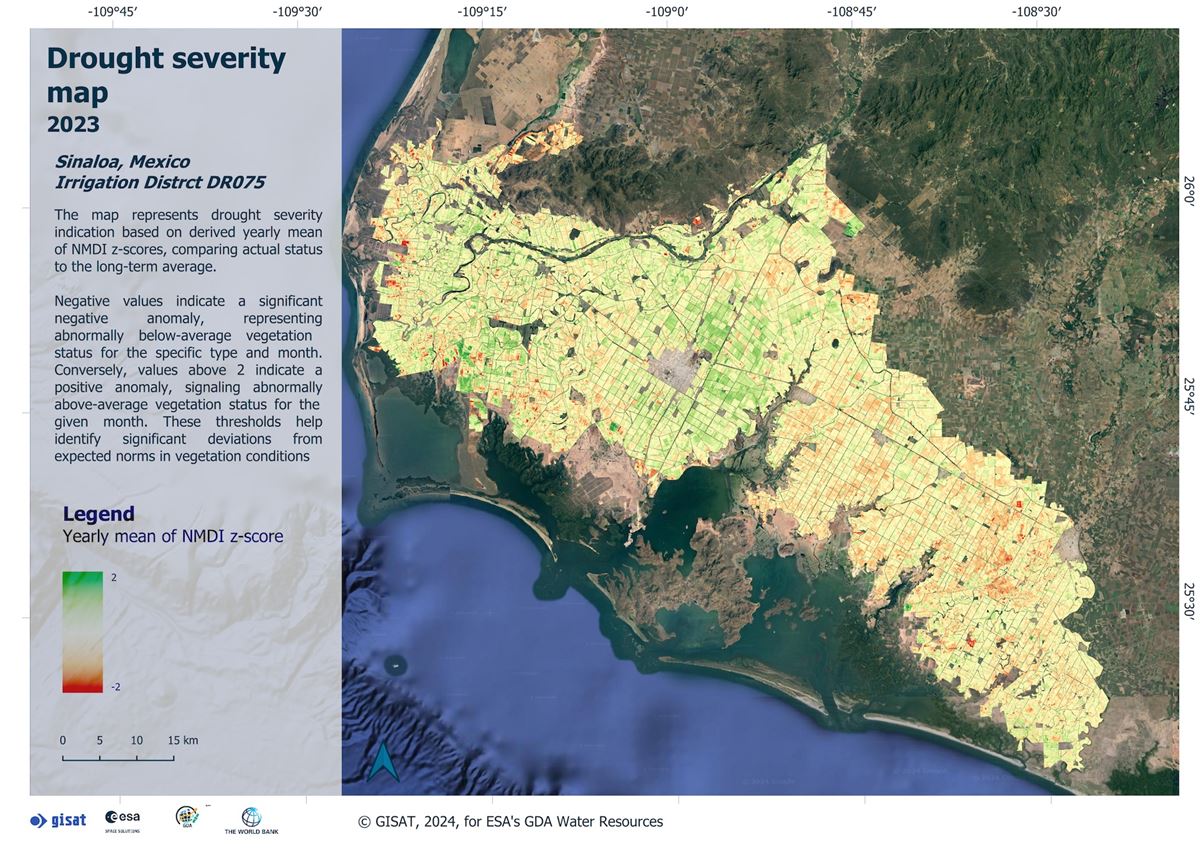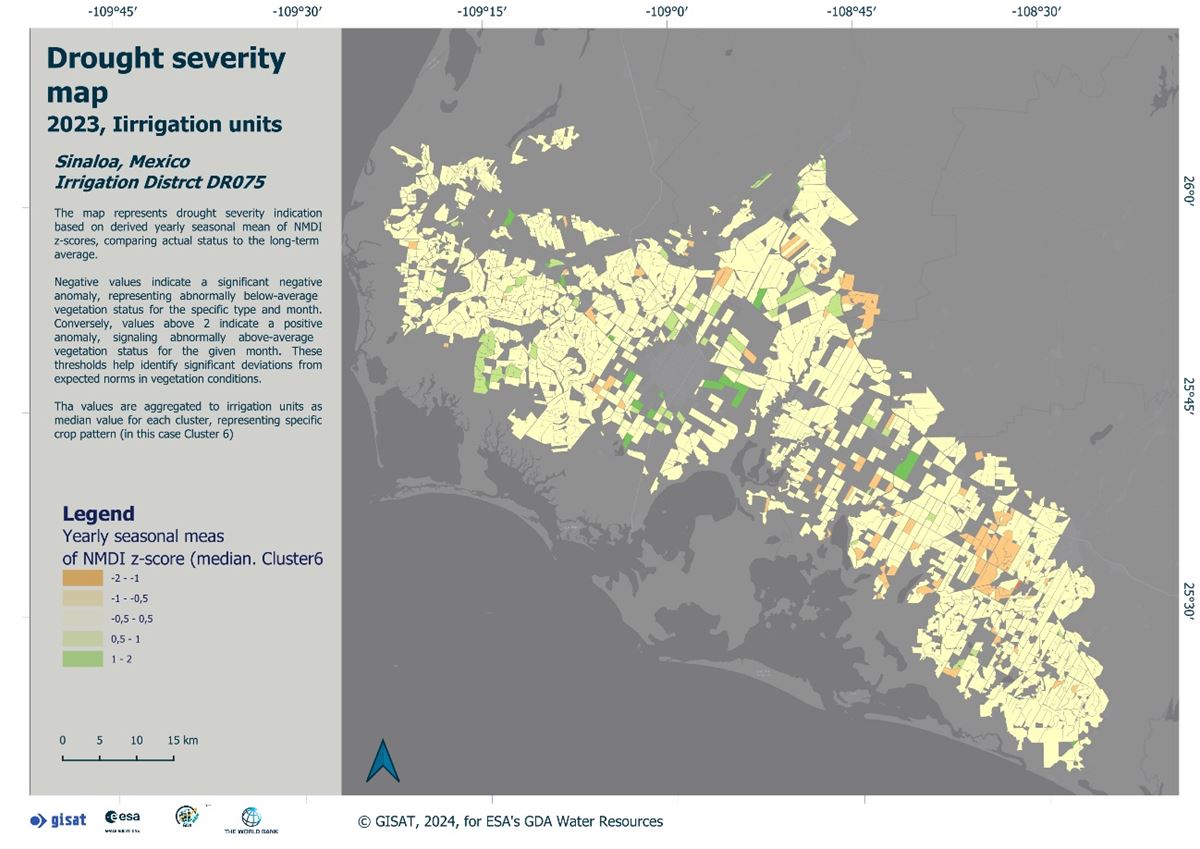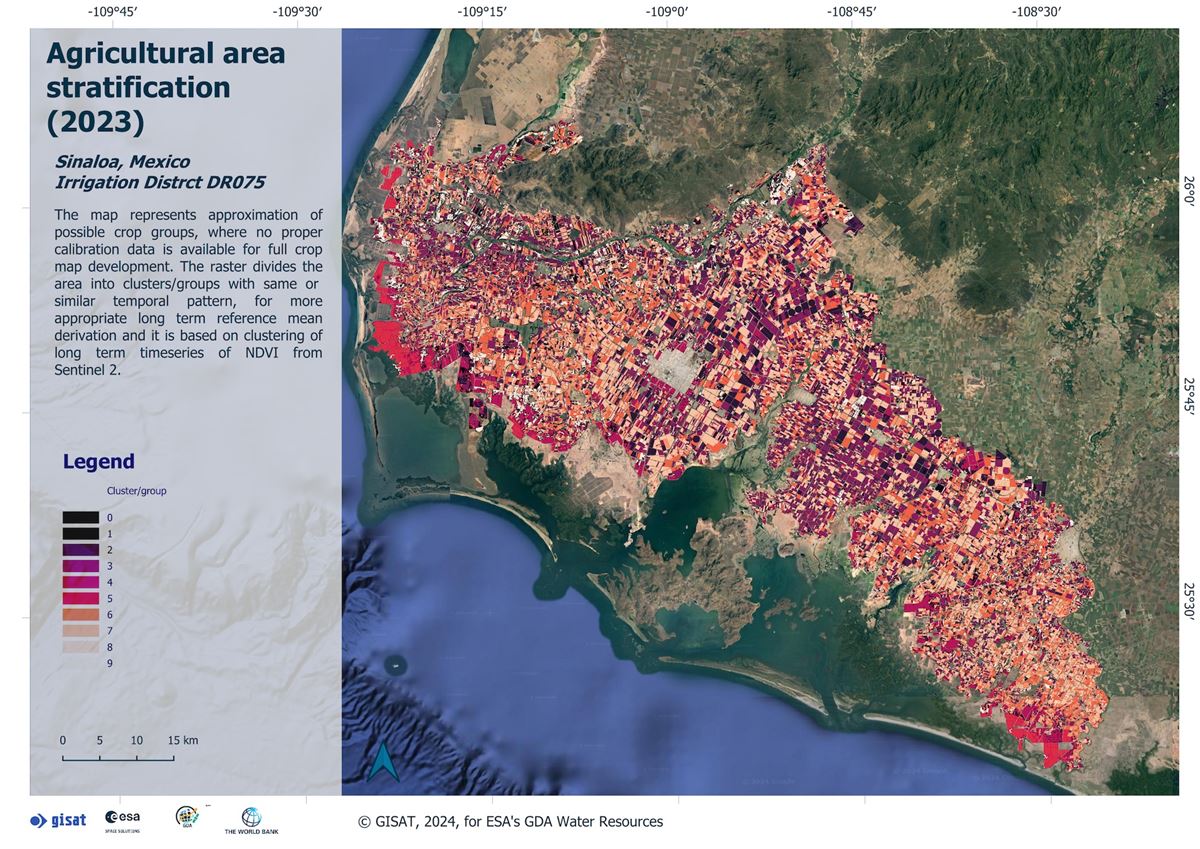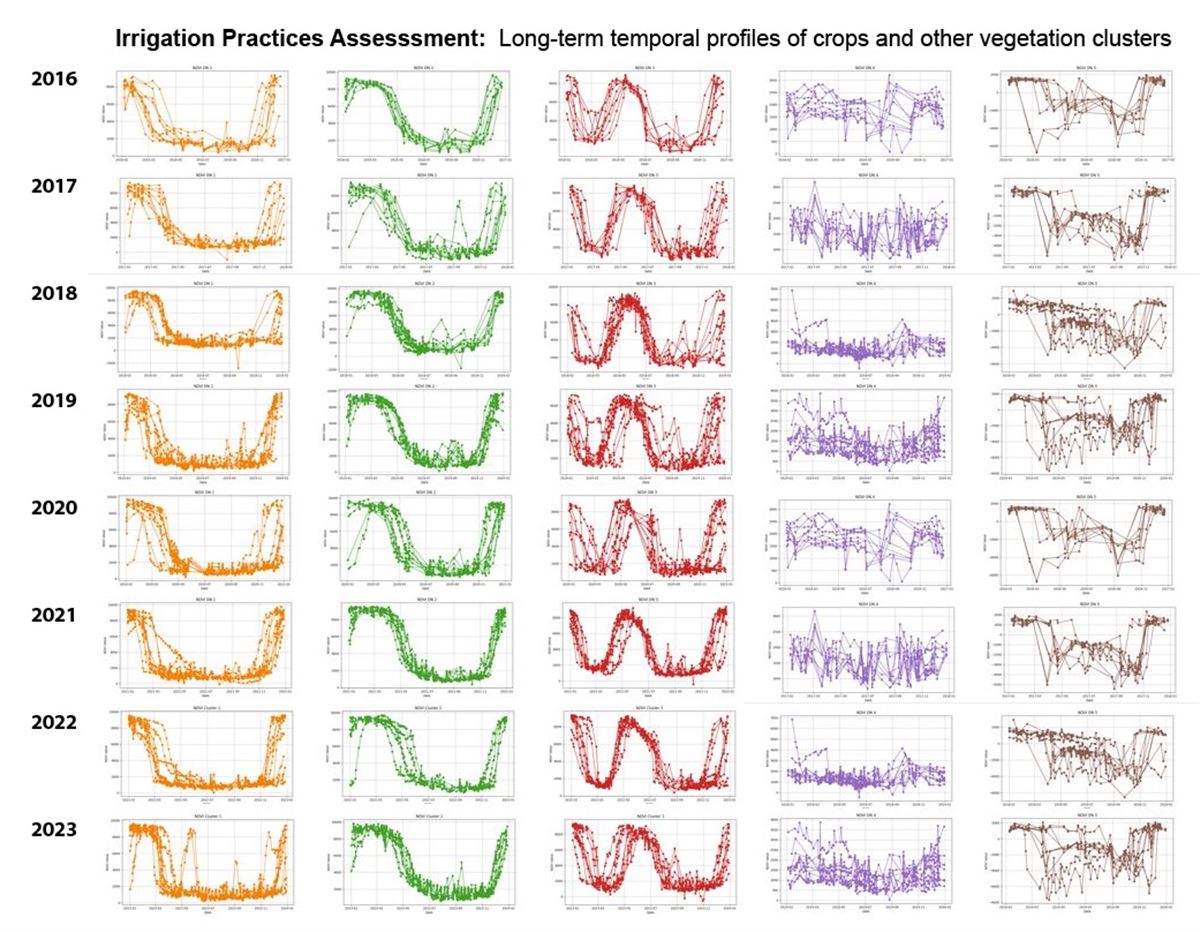Situation
Mexico's agricultural sector relies heavily on its extensive irrigation districts, which are vital for producing approximately one-third of the nation's essential food supply
These districts form the backbone of agricultural productivity and food security. However, a significant challenge has emerged due to the rapid expansion of urban areas into traditional agricultural zones. This demographic shift has intensified competition for water resources, leading to increasing tensions between agricultural and urban demands.1
The primary challenge manifests as an acute competition for limited water resources, particularly evident in regions such as Sinaloa’s Río Fuerte Irrigation District (DR075). This district, crucial for both agriculture and human consumption, experiences significant pressure on its existing water infrastructure due to urbanization. The expansion of cities into previously agricultural areas not only increases demand for water but also complicates the overall resource management landscape. This dynamic underscores a broader trend where population growth and urban development directly impact the availability and allocation of natural resources, creating a complex interplay of environmental and socio-economic factors.1
A critical need exists for accurate and up-to-date data on land and water use to effectively address these competing demands. Without precise information, resource managers face significant hurdles in making informed decisions. Furthermore, water rights in the Río Fuerte region are frequently contested, highlighting the inadequacy of traditional or less data-intensive management approaches. The prevalence of such disputes emphasizes the urgent requirement for reliable and efficient water delivery mechanisms that can be objectively justified and managed.1 The absence of comprehensive and real-time data directly exacerbates these water management challenges, contributing to inefficient allocation and heightening the potential for conflicts over water access. This situation makes the adoption of advanced, data-driven solutions not just beneficial, but essential for sustainable resource governance.
